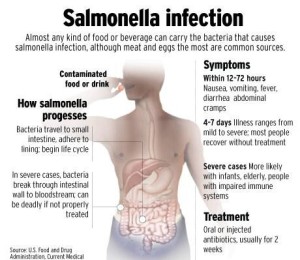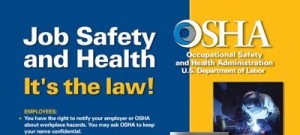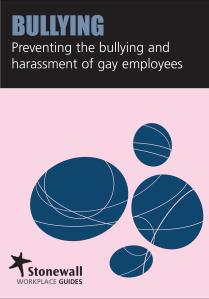Â
“Sleepless in Seattleâ€: A true fire alarm tale reveals lessons “From the Fieldâ€
 This last weekend, I stayed at a full service hotel in downtown Seattle. When I checked in, I was delighted to receive a room on the very top floor of the hotel (the 20th floor), as I was excited about having a spectacular view of Seattle. It was my first time visiting Seattle, so I was looking forward to an “adventureâ€. Yes, I was about to have an “adventureâ€.
This last weekend, I stayed at a full service hotel in downtown Seattle. When I checked in, I was delighted to receive a room on the very top floor of the hotel (the 20th floor), as I was excited about having a spectacular view of Seattle. It was my first time visiting Seattle, so I was looking forward to an “adventureâ€. Yes, I was about to have an “adventureâ€.
The adventure begins
After a great dinner, I went to bed. At 4am, my “adventure†started. The fire alarm siren went off like an atomic bomb exploding inside my guestroom. It was very LOUD and CLEAR. Now, I am an experienced hotel security and risk management professional, so what did I do? Exactly what everyone who has any experience with hotel fire alarms would do…I stayed comfortably in my warm bed. I suspected that someone got caught smoking in a hallway, or an employee burnt a piece of toast, setting off the alarm.
Then it came….a barely audible PA announcement. “This is hotel security, there’s a fire in the hotel, evacuate the hotel using the South stairwell!†The announcement was made only ONCE, and it was hard to hear and understand, BUT it was enough to get my warm butt up and evacuating. By the way, which way is South? There was no compass in my guestroom to point me in the right direction.
I exited my hotel room and immediately met up with eight women who had just exited their rooms, but did not know where to go, or where the South stairwell was. They were standing a mere ten feet away from the stairwell door. I knew exactly where the stairwell was, as I am a trained risk management professional, and always make a mental note of all emergency exits on my floor when I stay at any hotel. (Truth be told, I had to use the stairs earlier to get a soda from a machine on the floor below. But don’t tell my wife, she thinks I actually was pre-prepared for the fire and that impressed her.)
We all evacuated the hotel down the stairwell. Yes, I’m talking 20 flights of evacuation stairs. I didn’t think that view of Seattle was so “spectacular†now. I do have to say I loved every moment of it though, as I was participating in an actual hotel emergency, but WAS NOT responsible for it. As a risk manager for the hospitality industry, I spend a majority of my time training, planning and preparing hotels for these types of emergencies. I was now being “a fly on the wall†in an actual emergency in all its glory.
Lessons learned
With every experience, come lessons to learn from in order to seek improvement. Here are the lessons I learned:
- If you’re going to evacuate a hotel, make more than one announcement on the hotel-wide PA system. Guests who are startled at 4am need more than one announcement to clear their head and have them understand what you want them to do. At least three announcements should be made in succession.Â
- Mark all emergency exit stairwell doors. They should be marked with a sign on the actual door of the stairwell, both at eye-level and at ground level. The Seattle hotel had the mandated illuminated “Exit†signs high above the doors, but it did not have a simple “emergency exit†sign or “stairs†sign on the door to the stairwell. The guests I met in the hallway were literally in front of the stairwell door, but did not recognize it as such, because there was no marking on the door itself. People do not look up during a crisis. The illuminated “exit†signs could be concealed if smoke was in the hallway. As smoke rises, it would cover signs that are posted higher than three feet from the ground. This is why all hotels should post room numbers and exit signs also on the bottom of the door face. Currently, only a handful of counties and municipalities require this as code.Â
- Train hotel staff how to use the emergency fire panel. I learned from talking to other guests that floors 3, 4, 5, and 6, along with floors 18, 19 and 20 were the only floors evacuated. Floors 7 through 17 were not evacuated and received no fire alarm siren at all. I have to surmise that hotel personnel who were operating the fire panel did not completely understand how to operate the panel properly, because the actual fire was on the 5th floor. A decision to evacuate floors 18-20 but not 7-17 made no sense whatsoever.Â
- As a side note, I was absolutely shocked at how many adults actually wear pajamas to bed. I would have never guessed that many.
Â
In retrospect
After the entire incident, I was pleased to discover that all of the things us risk managers stress over and over again actually do have merit.
Educate your staff on how to operate your hotel’s fire life safety system. Make sure every management, night audit, engineering and security employee knows how to operate the fire panel and PA system. Train all employees about their respective response roles in the event of a fire alarm and/or hotel evacuation. This must be a carefully orchestrated procedure in order to minimize risks to guests and staff alike. And keep in mind, as never fails, most hotel fire alarms do occur during the overnight shift when no one is expecting them and there are the least number of staff to respond.
Review your hotel’s Emergency Response Plan, and make sure it has been updated. Ensure all personnel actually read and understand the emergency plan on a regular basis. A yearly fire drill with evacuation is recommended.
Post-script
The actual fire was a small grease fire that occurred on a stove in the restaurant’s kitchen. The kitchen was on the 5th floor of the hotel. While the hotel probably did not need to be evacuated at all, there was a large amount of smoke, so I’m sure the limited hotel staff on duty decided to be safe than sorry.
(Todd Seiders is director of risk management for Petra Risk Solutions, which provides a full-range of risk management and insurance services for hospitality owners and operators. Their website is: www.petrarisksolutions.com. Todd can be reached at 800-466-8951 or via e-mail at: todds@petrarisksolutions.com.)
 Typically, wage-and-hour suits involve allegations that employers have failed to pay wages for time worked, or failed to pay at rates required by law.
Typically, wage-and-hour suits involve allegations that employers have failed to pay wages for time worked, or failed to pay at rates required by law.









